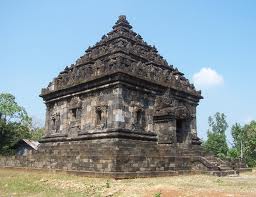 This temple is located highest in Yogyakarta. Ijo Temple is a very pesona.disamping temple we see the temple we can see the natural beauty of the aircraft that was landing. because it is situated close to the airport Adisutjipto yogyakarta.with the temple that makes Adisutjipto airport runway could be extended to the east .he,,,
This temple is located highest in Yogyakarta. Ijo Temple is a very pesona.disamping temple we see the temple we can see the natural beauty of the aircraft that was landing. because it is situated close to the airport Adisutjipto yogyakarta.with the temple that makes Adisutjipto airport runway could be extended to the east .he,,,Ijo Temple, Temple of the Highest Located in Yogyakarta
Going along the road to the south of Queen Boko Palace complex is an exciting journey, especially for cultural tourism lovers. How not, the building of the temple there were scattered like mushrooms in the rainy season. One of them is not much into conversation is Ijo Temple, a temple which located the highest among other temples in Yogyakarta Special Region.
Ijo Temple was built around the 9th century, on a hill known as Green Hill Gumuk Ijo that height is 410 m above sea level. Because of its altitude, it is not only the temple that you can enjoy the natural scenery but also below such as terraces in the agricultural area with a steep slope. Although not a fertile area, the natural scenery around the temple is very beautiful to be enjoyed.
Temple complex consists of 17 building structures that are divided into 11 terraces. The first terrace lawn to the entrance is a terrace staircase stretching from west to east. Building on the terrace to form a fence around the 11th, eight phallus stakes, four of the main temple building, and three ancillary temples. The laying of the building on each core based on kesakralannya. Building on the highest terrace is the most sacred.
Encountered various forms of art since the entrance of the building belonging to this Hindu temple. Just above the entrance there are times makara with dual head motif and several attributes. Motives and attributes that can also be found in Buddhist temples show that it is a form of acculturation temple of Hindu and Buddhist culture. Some temples have a similar motive when makara among others Ngawen, Plaosan and Sari.
There is also a statue depicting the figure of women and men who drift and lead to certain side. The figure could have several meanings. First, as suwuk to mngusir evil spirits and the second as a symbol of unity of Lord Shiva and Goddess Uma. Unity is seen as the beginning of the creation of the universe. Unlike the statue at Prambanan, natural style of the statues in Temple Ijo not lead to eroticism.
Towards the building of chapel on the terrace to-11, there is a place like the tub where the fire sacrifice (Homa). Right at the top of the wall behind the tub there are air holes or vents in the form of a parallelogram and a triangle. The existence of the fire sacrifice reflects the Hindu community that worships Brahma. Three of chapel showing respect for the Hindu Trimurti society, namely Brahma, Shiva, and Whisnu.
One of the saving mysteries of two inscriptions are located in the building of the temple on the terrace to-9. One of the inscriptions is coded with the writing Guywan F or Bluyutan means hermitage. Another inscription stone measuring 14 cm high and 9 cm thick load of spells that estimated in the form of condemnation. Mantra is written 16 times and include a legible is "Om Sarwwawinasa, Sarwwawinasa." Could be, the two inscriptions are close to the occurrence of certain events in Java at that time. Is the event? Up to now have not been disclosed.
Visiting this temple, you will see beautiful scenery that can not be found in other temples. When facing west and looking down, you can see planes taking off and landing at the airport Adisutjipto. The scene could be found because the Thousand Mountains where this temple stood the eastern limit of the airport. Because of the existence of the temple in the mountains, too, Adisutjipto airport runway could be extended eastwards.
Every detail of the temple presents something meaningful and invites the visitors to reflection so that the journey will not just be fun time. The existence of many great works of art without the name of the creators show Javanese community views that emphasized more on the moral message presented by a work of art, not the creators or the grandeur of his art.








No comments:
Post a Comment